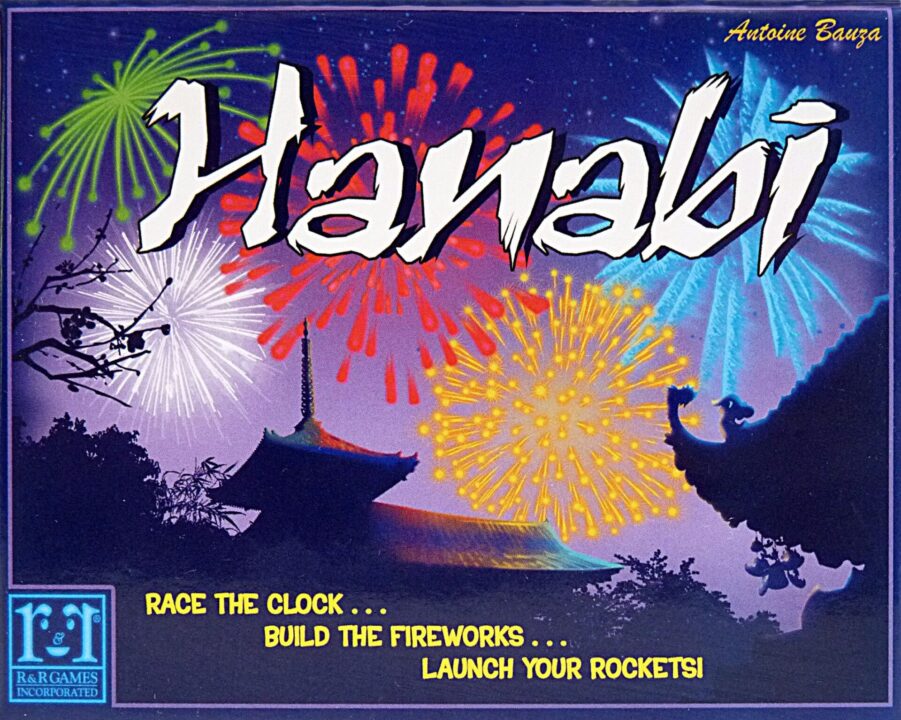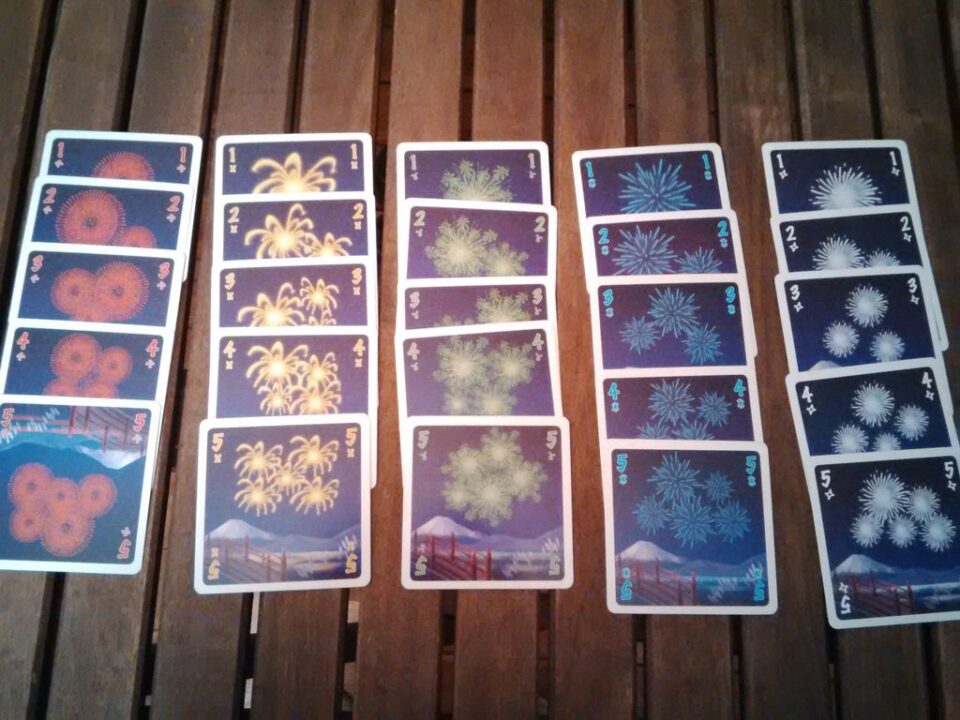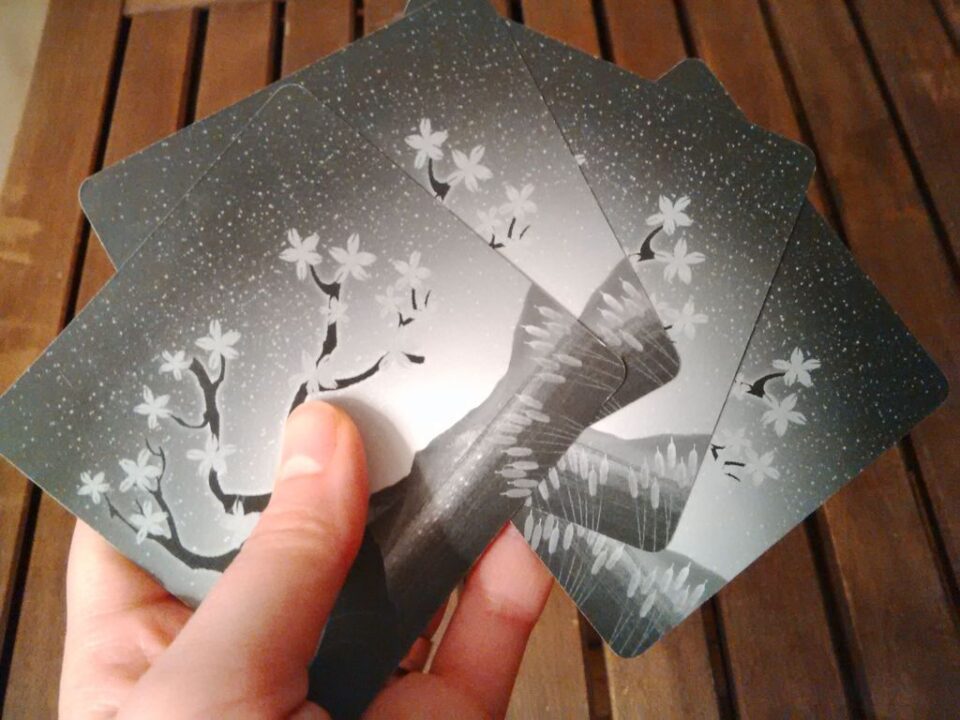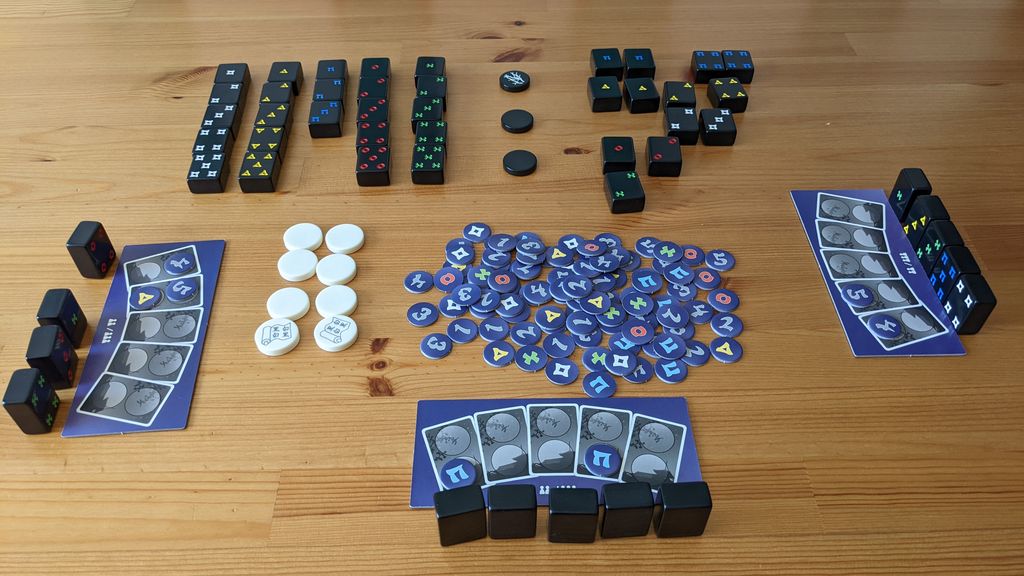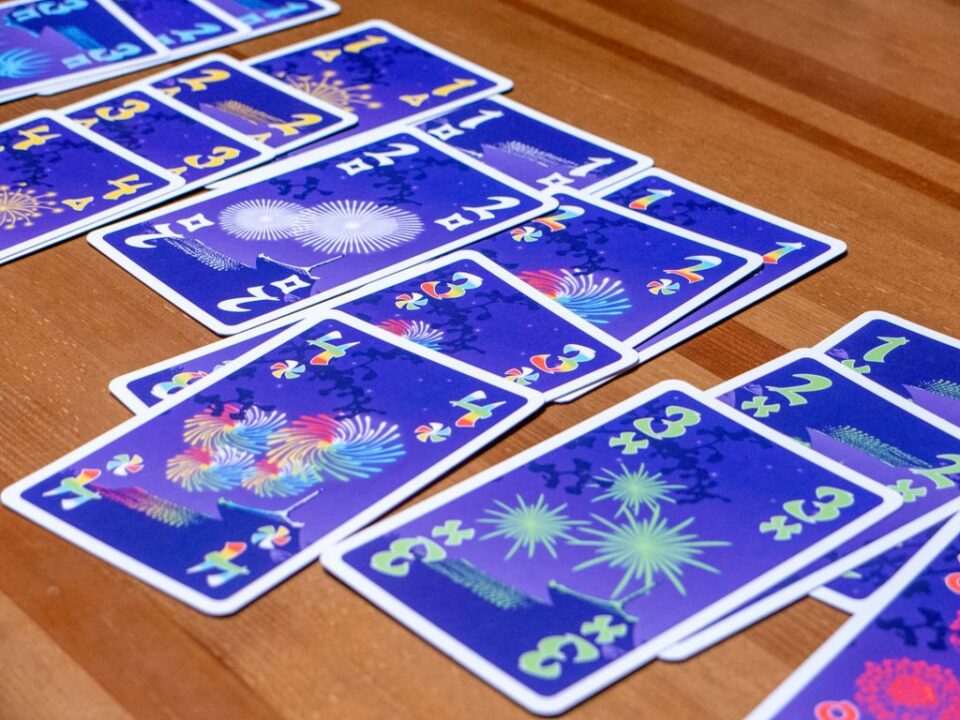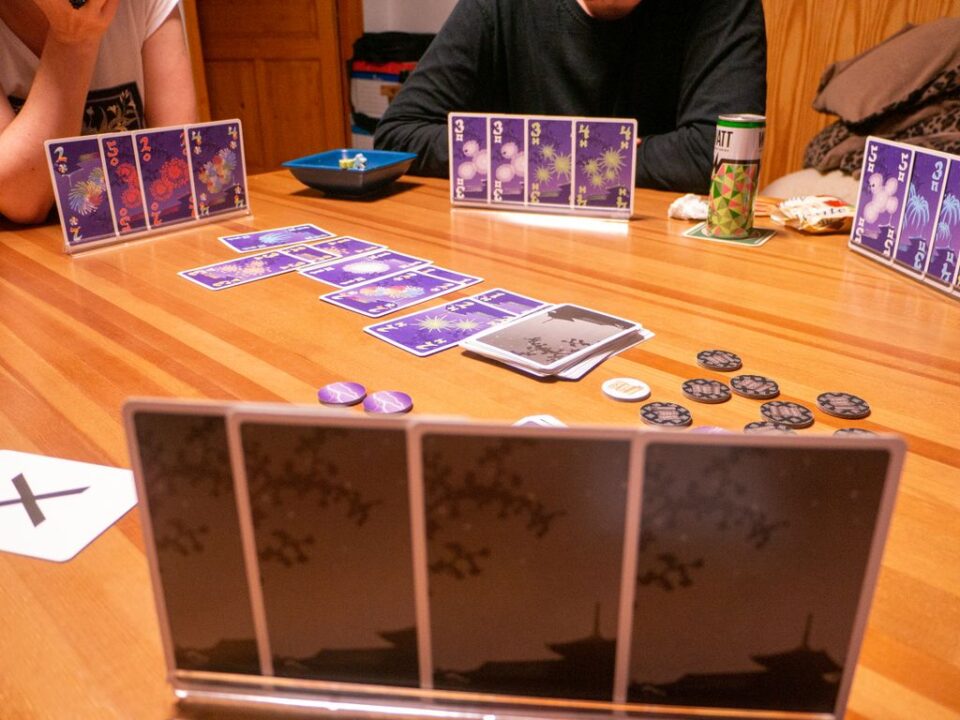Overview
Welcome to my impassioned dissection of a board game that thrives on the brink of shared accomplishment and perishes in the abyss of collective missteps – ‘Hanabi‘. In today’s review, we’re diving deep into a game that asks players to juggle between the silent exchange of crucial information, the delicate dance of cooperative strategy, and the symphonic flow of gameplay synchronization. Let’s light up the sky together in this Hanabi Review as we explore what makes this firework-themed gem tick and sometimes explode in a cacophony of sparks and cheers.
How It Plays
Setting Up
In Hanabi—A game of delicate clues and careful teamwork. To start, each player is dealt a hand of cards that they hold facing away from themselves. With only the card backs in sight, players rely extensively on information from their teammates to play correctly.
Gameplay
Teams take turns giving strictly limited clues about the numbers and colors of cards to their peers or by discarding or confidently playing a card onto the table, aiming to create stacks of cards in ascending order by color.
Winning the Game
The game ends either when the firework show is completed by playing a ‘5’ of each color, or when an error causes the third strike token to be taken. Teams score based on the card stacks successfully made.
Want to know more? Read our extensive strategy guide for Hanabi.
Mastering the Unspoken Dance
Few games test the cooperative mettle of a group like Hanabi does—a true gem in the world of cooperative strategy. In my last review, which tackled a variety of board games, the subtleties of “Hanabi Review” emphasized the symphony of silent cues and veiled tactics. Unspoken Bonds Recalling sessions at my kitchen table, we, as a team, flourished not by one player dominating but through nurturing an unsaid mutual understanding. It became less about personal triumph and more about the collective crescendo of perfectly played cards. Strategic Harmony Navigating the waters of strategy in Hanabi often highlighted transition moments where, initially chaotic, our choices eventually synced into strategic harmony.
Transitioning from a meticulously strategized ballet to nuanced communication, we delve into the defining aspect of Hanabi: Communication Limits.
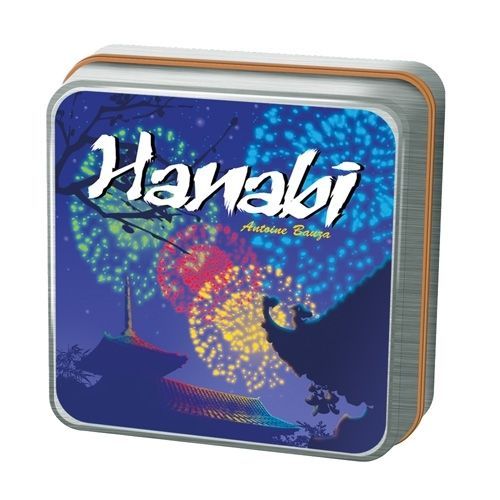
The Silent Dance of Deduction
In my time writing for the Hanabi Review, what constantly stood out was the ballet of unspoken understanding. Limited Clues – that’s what you get. Just one piece of information per turn, requiring a meticulous pick. It’s challenging since blatantly pointing out what to play is off the table.
Hints: Smoke Signals
You’re relying on these tiny informational smoke signals – a color or a number. I remember one specific game where a single hint about a ‘1’ set off a cascade of card plays. Such an economy of conversation!
Strategic Silence
It’s not just the words; the silence says it all. Deciding not to clue is just as strategic, leading to moments thick with anticipation.
Up next is the delicate art of Gameplay Synchronization, where we will see how players take these compact cues and move as one.
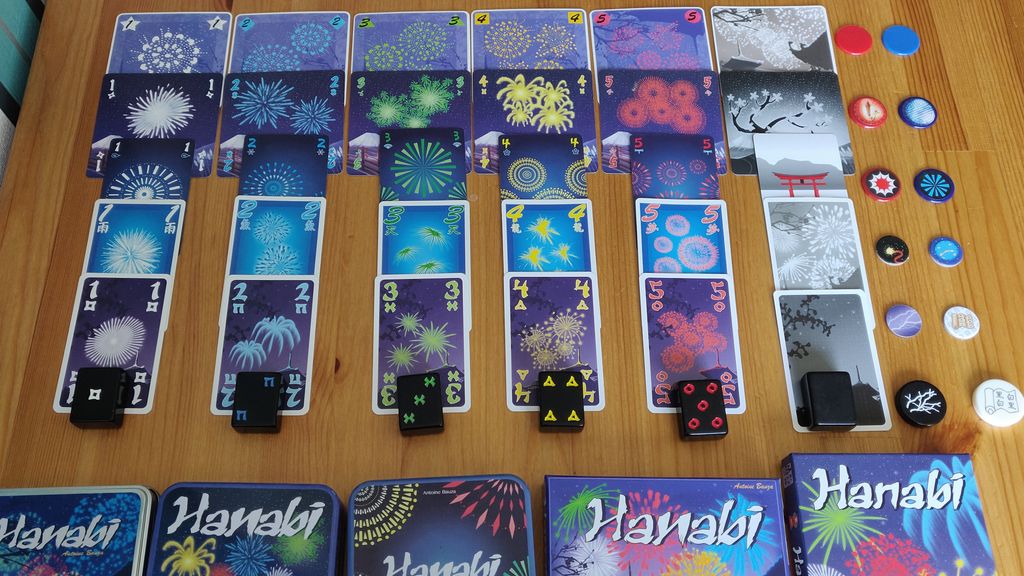
The Rhythmic Dance of Hanabi
In Hanabi, players must move in a delicate unison, much like a carefully choreographed dance—where every action and non-action matters.
Shared Goals
Diving into the Hanabi Review, I recall specific playthroughs where the gameplay synchronization honestly felt like magic. It’s there, in that collective breath we held as we watched a teammate pause—ponder—and ultimately play the right card. Every move in Hanabi is a quiet agreement among players to trust in each other’s understanding of the shared objective.
Gameplay Flow
Progressively, the game’s flow becomes a living entity at the table, quietly guiding us towards success or dispersing into chaos—often hanging by a thread of a single card. The sheer joy in those moments cannot be overstated. So, with the turn of the last card, do I recommend Mr. Antoine Bauza’s gem? As eagerly as a fireworks finale bursts into the night!
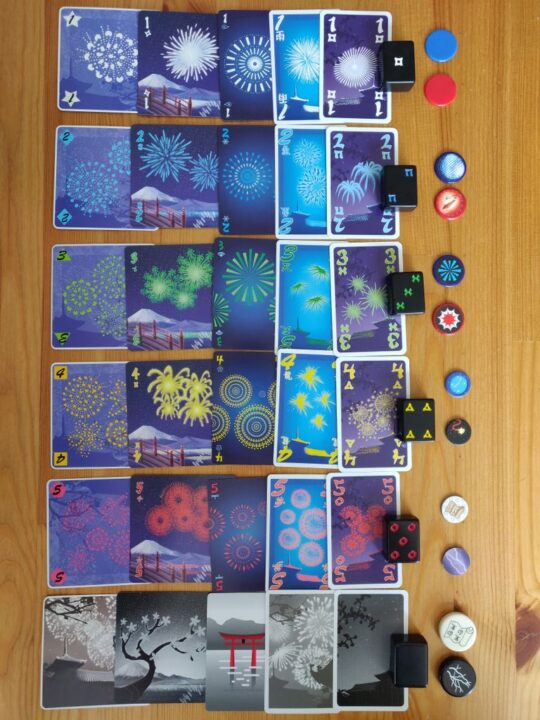
Conclusion
Bringing this Hanabi Review to a close, I can unreservedly say that the game possesses a unique blend of cooperative strategy, precise communication, and collective synchronization, which come together to create an immersive and challenging experience. The constrained communication system instills a fascinating layer of deduction, while the synchronization demands of the gameplay foster a deep level of group cohesion that is seldom matched by other board games. These mechanics, though they might pose a steep learning curve for some, undoubtedly contribute to enriching social interactions and memorable game nights. So, if you’re in search of a game that marries mental prowess with team dynamics, Hanabi is a sparkler you wouldn’t want to miss out on.

